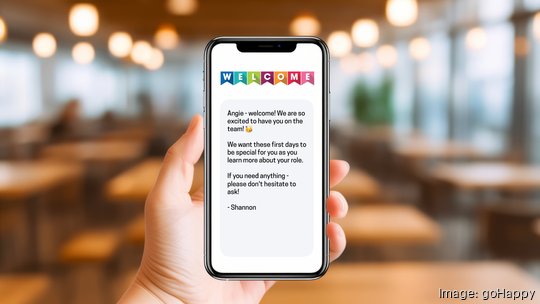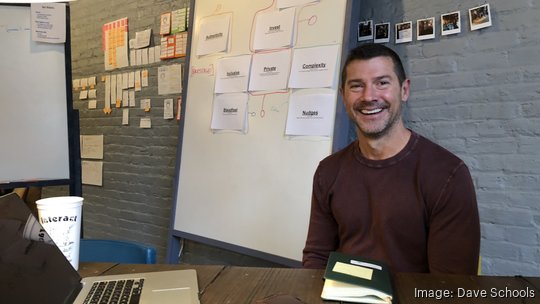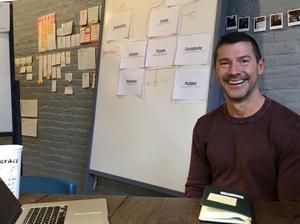
Richmond employee communications platform goHappy says it has grown 300% over the last year and just finalized a deal with a growing restaurant group.
The company offers a software-as-a-service platform that allows companies to communicate with what founder and CEO Shawn Boyer calls “decentralized employees.” These are frontline workers who do not sit at a desk and do not have access to email. The platform allows companies to send messages directly to these employees through their phones.
“Imagine when you get up in the morning and all throughout the day you aren’t getting any communication with respect to the priorities, who is doing what, logistical things,” Boyer said. “It’s such a void.”
Boyer is well-known in Richmond’s startup community. He started the hiring platform Snagajob and saw the problem with onboarding and communicating with frontline employees. He founded goHappy with a team from Snagajob in 2016.
“We recognized that there was this gap once somebody was hired with respect to communications and how is the company getting feedback from frontline employees,” Boyer said.
The company initially raised money through friends and family and brought in San Francisco’s Growth Street Partners as an institutional investor last year. The amount of the raise was not released publicly, Boyer said.
“It was a significant amount, but it was only a minority interest,” Boyer said. “They only invest in SaaS companies that are at a certain stage.”

Boyer said a new contract with fast-growing Florida restaurant chain First Watch was significant for goHappy. First Watch counts 10,000 employees across its ranks and Boyer said it has rolled the platform out across the company.
One the real challenges Boyer says goHappy has been facing is educating companies, as they have never had the ability to communicate with frontline employees and do not have the processes in place to perform the function.
“There are all sorts of questions that they have,” Boyer said. “They want to know who should own it. Is it an HR function? Do internal communications own it? Who is able to send the messages and how many messages are too many? Will people want to hear from us?”
At the same time, companies realize the benefit of instantly reaching all or some of their employees.
A key feature of the platform is surveys and feedback. With goHappy, companies can send surveys to new hires and understand how the onboarding process went. The platform also allows them to survey all employees or a particular subset. The data can be sorted by position type, length of time with the company and other parameters.
“I think the more people use it and think about it, the more different use cases that they come up with,” Boyer said.
Restaurants and the hospitality industry are obvious users, but the company has made inroads into manufacturing. These companies face the same challenges of communicating with people on the manufacturing line.
Boyer said one of the most interesting use cases for goHappy was a bus company. It operates school buses across the country and was not able to speak directly to the company’s 25,000 bus drivers. Prior to the platform, the only way to communicate with them was through a phone tree. A regional manager would call or text a local manager and the local manager call or text the bus drivers.
“Once they introduced our platform, now these managers can get messages out to their team anytime they need to,” Boyer said.
GoHappy has 22 employees. Boyer would not provide revenue numbers. He expects the company will grow 200% over the next year. The company is not currently hiring but might look to hire later this year or early next year. He expects the company will top out at around 40 employees, significantly less than the 300 employees at Snagajob.
“Our goal this time is that we want to operate with a much smaller team,” Boyer said.
Boyer said goHappy is planning to build out a suite of other products aimed at frontline workers with a goal to help companies reduce turnover and increase profitability.
“We want to be a complete frontline employee engagement platform,” Boyer said. “We started with communications because that is the foundation on which everything else builds.”

